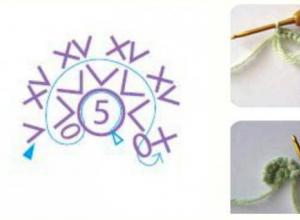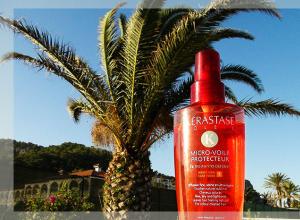Is it possible to put breast milk on a baby's nose? Is breast milk effective for treating a runny nose?
Breast milk should not be dripped into the nose.
Such instillations, especially for a child, especially an infant, are a wild, blatantly illiterate and absolutely ineffective folk method of treatment.
This remedy for the common cold does not have any healing properties. In addition, it can be harmful because in certain types of rhinitis it can cause complications that are more severe than the disease itself.
But first things first. First, let’s refute the established idea of breast milk as an effective remedy for inflammatory processes in the nasal mucosa.
What does traditional medicine say about breast milk for a runny nose, and how stupid is it?
The main hypothesis used by folk healers, grandmothers and similar people to justify the benefits of such actions is as follows: milk contains a large amount of maternal antibodies, which increase immunity in the nose after instillation, and thus help the body resist viruses and bacteria.
Such a formulation demonstrates a complete misunderstanding of the principles of the body’s functioning and ignorance of the well-known fundamentals of immunology.
Breast milk actually contains immunoglobulins of classes A, G and M (the vast majority are immunoglobulins A), which form the child’s immunity for the period while he is breastfed. However, they are effective only when they are in the blood, where they enter after being absorbed from the baby’s stomach, or in the tissue fluids for which they are intended.

Mother's antibodies enter the baby's body through the stomach when the baby eats, and not through the nose.
Antibodies, which are intended for absorption in the stomach, do not have any protective qualities directly on the nasal mucosa. They are designed to work specifically as part of blood plasma. They do not “increase” local immunity in any way and cannot fight infectious agents here.
Note
There are thousands of times more protective components in simple snot than in breast milk. If even the snot can’t cope with the infection, then milk is guaranteed not to help.
But this is not the only weak point in the method of treating a runny nose.
For example, such instillations are prescribed with the initial caveat that it will not immediately clear the airways, but over time it will destroy germs and viruses, and the nose will suffocate.
Of course, no one is talking about any specific deadlines here.
This is a common and slightly mean position of traditional healers. Like, drip, drip, someday the runny nose will definitely go away. The disease goes away as usual, but not thanks to this method, but completely regardless of its use. Only simple-minded mothers who are able to believe in the effectiveness of such a remedy rarely have the sober thought that milk has nothing to do with it. And the healer uses the effect. Well, they say, the illness has passed!

Traditional healers and other charlatans will always be able to justify their “craft”, even if their advice leads to dire consequences
It turns out quite sad when a runny nose in such cases not only does not go away, but even becomes more complicated.
Dangers of using breast milk for a runny nose
The main danger of instilling breast milk is the possibility of exacerbation of a bacterial infection. Lactose, which is included in the composition, is an excellent food for pathogenic bacteria, and by pouring it into the nose, the unlucky doctor only feeds his own microbes, instead of destroying them.
As a result, it is precisely because of the use of breast milk for a viral runny nose that bacterial complexes can begin to form on the mucous membrane, and when they multiply, bacterial rhinitis develops with all its delights - pus in the snot and a constantly stuffy nose.
And if the patient or his parents think of carrying out such instillations for bacterial rhinitis, then the infection itself can spread to the throat, causing inflammation, to the auditory tubes, leading to otitis, and in older children and adults - to paranasal sinuses, causing sinusitis.
Conclusion: Dripping breast milk for a runny nose is dangerous!

An infant cannot develop sinusitis, but if a mother wants to drip her own milk into her nose, she may well end up with this disease.
Why do they say that such treatment helps?
Confidence in the healing properties of mother's milk arises among those whose children's bodies have overcome rhinitis on their own, but at the same time the mother could not resist and used similar advice. Of course, after this she will be sure that this particular treatment method worked.
For example, here is one of the reviews from a well-known forum:
“The child was 4 months old, had a severe runny nose, on the third day they called a doctor, he prescribed Laferobion suppositories, rinsing with saline solution, and if the temperature rises, Paracetamol. My grandmother advised me to give my daughter breast milk and said that this is how they always treated babies. I did everything the doctor said and additionally put two drops into my nose in each nostril. I did this together with saline solution alternately. After two days, the nozzles stopped flowing.”

Laferobion is one of the means to combat ARVI in infants, but it can only be used as prescribed by a doctor
Obviously, with this use, milk had no effect on the nasal mucosa at all. After instilling it, the mother added saline solution into the child’s nose, all the snot liquefied and flowed out within 10-15 minutes. In a normal healthy child, with this use of saline solution, the runny nose should go away after two days. Which is exactly what happened.
Now imagine the reaction of those mothers who came to this forum to find out whether the method works or not. Most of them have no idea how rhinitis occurs, why saline solution or Laferobion is used. They only saw that the review said about mother’s milk, and the result of its use is a healthy child.
Obviously, the vast majority of mothers will repeat the same stupidity. But not all of them will first receive a consultation with a pediatrician, and, therefore, they will not drip saline solution after milk. And there is a possibility that in a week they will be sitting in the clinic in line to rinse their child’s nose. And the baby himself will be doomed to suffer for a week with green bacterial snot and endure not the most pleasant procedures.

Queue at the children's clinic. This is where infants catch ARVI most often.
Therefore, never use breast milk for a runny nose. Moreover, do not put it in the baby’s nose. If someone recommends such a remedy to you, you may no longer believe a single word of that person. And if you come across such advice on some website, run away from there. Such nonsense is rewritten for $1 per thousand characters by schoolchildren who earn money from cookies by filling websites. You take this nonsense for the advice of doctors and are guided by it to treat your baby.
Breast milk is a remedy that is still used by some mothers as a cure for runny nose for newborns. Most doctors are skeptical about this method, arguing for the lack of effectiveness of putting milk in the baby’s nose.
Is it possible to drip milk into a baby's nose? Is this treatment effective? What can replace breast milk? How to bury it correctly? What does Dr. Komarovsky think about the benefits of breast milk for runny noses in infants?
Is it possible to put breast milk in the nose when a child has a runny nose?
A runny nose in an infant is a symptom of an infectious or viral disease. Children have a very difficult time with nasal congestion - their sleep and appetite worsen, and their general well-being worsens. The only way to relieve this symptom is to drain the nasal passages due to the lack of nose blowing skill.
Despite the fact that pharmacies offer many nasal drops and sprays, some mothers still believe that breast milk for a runny nose is the most effective remedy. They argue their point of view by the presence of immunostimulating substances in milk. However, the benefits of such instillation are questionable.
The case for breast milk treatment
Treatment with breast milk is imposed on young mothers by the older generation - grandmothers and great-grandmothers, who always used it for a runny nose in their infants. They argue that previously there were no such quantities of medicines in pharmacies, but children got sick less.
The views of modern parents have changed significantly. The only argument for treating a runny nose with milk is its ability, like any other liquid, to moisturize the nasal mucosa, due to which intensive removal of crusts occurs. Many grandmothers are also confident that it has a strong antibacterial effect, but this opinion has no scientific evidence.
What do opponents of this therapy method say?
Many young mothers and doctors claim that this method is not beneficial. In some cases, this method of treatment can lead to serious consequences. These include:

The effectiveness of sanitizing the nasal passages depends on the contents of the drug. Drops and sprays containing saline solution or sea salt help relieve inflammation and relieve symptoms. Breast milk enriched with immunoglobulins is beneficial only when it enters the intestines, where it promotes the formation of healthy microflora. Accordingly, a nursing mother should put her baby to her breast as often as possible in order to strengthen the functioning of the immune system and help the baby get rid of the disease as quickly as possible.
Rules for the procedure
If the mother is still confident in the effectiveness of the procedure, she should first study all the rules for its implementation. For instillation you will need fresh expressed milk. It is a favorable habitat for various microorganisms, which, under suitable conditions, begin to multiply and subsequently cause harm to health. If milk has been at room temperature for half a day, it cannot be used.
For the procedure, milk is used in pure or diluted form. For newborn children, experts recommend diluting it with sodium chloride, sterile or boiled water in a 1:1 ratio. In its pure form, it can change consistency and curdle.
Before using nose drops, it must be cleared of mucus using a baby bulb or aspirator. Some parents resort to using cotton wool coated with baby oil to remove mucus buildup from the nasal passages. Instillations should be carried out at intervals of 3 hours, i.e. 4-6 times a day. To carry out the procedure you will need a pipette. No more than 2 drops can be administered into each nasal passage at a time.
When using milk as the main treatment for the common cold, parents should monitor changes in the child's condition during therapy. If the desired result is not observed several days after the start of treatment, the mother should consult a doctor.
In what cases is it strictly forbidden to drip milk into a child’s nose?
Lack of effectiveness is not the only problem that a mother using this method may encounter. Worsening of the condition, development of complications in the form of inflammatory diseases of the upper and lower respiratory tract - this is not the entire list of consequences from the use of breast milk for instillation. First of all, they concern those children for whom this method of treating a runny nose is contraindicated - these are small patients with:

Komarovsky's opinion
Dr. Komarovsky outlined his vision of the effectiveness of nasal instillation of breast milk in his own book. He is skeptical about this method of treating a runny nose, claiming that milk does not have disinfecting properties, because this has not been proven by anyone. Young mothers take up this method due to inexperience, fatigue or hopelessness. Having tried all the expensive drops and sprays against the runny nose, which do not have an immediate effect, nursing mothers, in search of a reliable remedy, turn to their parents, and they recommend to them their proven method, with which they used to treat all family members.
When a baby's nose starts running snot, a new mother has something to worry about. It seems that there is an urgent need to find a cure, otherwise in three hours the child will certainly have laryngitis, otitis media and sinusitis at the same time.
The situation is aggravated by the fact that in many cases, first of all, a young mother asks her friends for advice, looks for an answer on the Internet, or learns a grandmother’s advice: “Drip breast milk into the baby’s nose and everything will be fine.”
Everyone has heard that mother’s milk is good for the baby, promotes the development of immunity, provides the baby with protection from viruses and has a comprehensive positive effect on his body, but not everyone understands well that this is caused by protective antibodies to diseases that the mother’s body produces and which the child receives it with milk. The logic of the proposal to drop milk into the baby’s nose is simple: milk is healthy, which means that now we will drop it into the baby’s nose and it will kill all the bacteria there. This is milk, it cannot be harmful to newborns.
In fact
The composition of breast milk is not much different from the composition of cow's milk. It is less fatty and good for our children. Therefore, if milk helped with a runny nose, advice to drop diluted cow's milk into the nose would be very popular.

But this remedy does not help. Does not kill bacteria, does not relieve swelling, does not help relieve inflammation. On the contrary, milk is an excellent breeding ground for bacteria, which can multiply faster in it, which causes, accordingly, the rapid progression of a runny nose and the development of complications, and the mucus produced in a child’s nasal passages contains a much larger number of beneficial microorganisms that help in the fight against the disease.
Possible benefits
The only way to use milk for a runny nose rationally and without harming the child is to use it as a mucolytic and moisturizer. In this role, it helps - not as good as products that can be bought at the pharmacy, but good enough for treatment at home. It is necessary to dilute the milk with saline solution in a ratio of one to one and drip it into the baby’s nose twice a day. You need to do it like this:
- Express the milk and dilute it with saline, stirring well.
- Use a pipette to collect a few drops.
- Carefully, holding the baby's head, insert the tip of the pipette into his nose.
- Drop two drops - more will simply not benefit the body.
After the procedure, the pipette must be washed. The consequences will be as follows:
- The mucus will become more liquid, which will facilitate its rapid removal from the body and make it easier for the baby to breathe.
- The dry crusts that occur if the air the baby breathes is too dry and the mucus dries out before it has time to leave the nose will soften.
Some time after the procedure, accumulated mucus should be removed using a rubber bulb. This is easy to do - you need to lubricate the tip of the bulb with Vaseline, release the air from it, insert the tip into the baby’s nose and carefully, smoothly open your hand.
The main thing is to do this gently enough so that the sudden pressure drop does not damage the walls of the blood vessels. If after the procedure the child still has softened crusts in his nose, you should use cotton swabs and milk, which helps in this situation. Need to:
- Take cotton pads, which are better suited than cotton wool, because they do not fray or fall apart into fibers, and roll them into two thin flagella along the diameter of the baby’s nostrils.
- Dip them in breast milk diluted with saline and insert them into the nose.
- Leave for a while so that the dry mucus has time to soften and fall off the mucous membrane.
- Carefully twist the flagella a couple of times and carefully pull them out.
The procedure should be carried out when the child is calm and not fidgeting. A good solution would be to involve an assistant who can distract the child from what is happening with his nose.
But a much more effective therapy would be to simply feed the baby milk (it is also effective if the mother also has a runny nose - this, due to the increased amount of antibodies in the blood, will be an excellent help for the baby’s body in the fight against the disease), while simultaneously contacting a pediatrician , who can make a diagnosis and prescribe official treatment that will help with a runny nose.
Consequences
If treatment with milk was nevertheless carried out, this could lead to the following consequences:
- The rapid development of pathogenic bacteria in the favorable environment created for them by breast milk.
- Complications caused by the penetration of milk that has turned into a curdled mass into the depths of the nasal passages.
- Difficulty breathing caused by the fact that milk can clog the baby’s nasal passages - which are already quite thin and easily stop allowing air to pass through.
In what cases is it strictly prohibited to drip milk?
You should not use milk even for instillation and clearing of the nose if the child has:
- Acute lactose intolerance, which manifests itself as an allergy and can cause reactions from rash and itching to angioedema.
- Signs of complications caused by a runny nose are an unpleasant odor from mucus, a yellowish or greenish tint of snot, seemingly causeless crying, drowsiness, passivity, lethargy, attempts to touch the ear or forehead, watery eyes, photophobia. Treatment with milk in case of complications can only worsen the situation.
- Physiological runny nose caused by the influence of the external environment. In this case, it is much more effective than instilling milk and rinsing the child’s nose with it, it will be to set the humidity in the room to 60% and the temperature to 22 degrees. In this case, the runny nose will go away on its own and treatment with milk for a runny nose will not be needed.
Instead of self-medicating with home recipes, the child should be shown to a doctor and find out what kind of treatment he really needs and will not cause negative consequences.
Faced with such an unpleasant phenomenon as a runny nose in a baby who is not yet a year old, mothers think about safe treatment. It is impossible to leave everything as is, because due to the structural features of the nasopharynx, infants simply do not know how to breathe through their mouths. Eating becomes a serious challenge, since this process is impossible without nasal breathing.
Features of a runny nose in children under one year oldSuch young children do not have an isolated runny nose, again due to the structural features of the nasopharynx. The infection goes down and affects the pharynx, and sometimes reaches the middle ear, causing pharyngitis.
The baby is suffering because his throat or ear hurts. But he cannot say this; he limits himself to crying. This only increases the amount of snot. The condition brings discomfort because babies are not able to take care of themselves and blow their nose.
How to help your baby?The first step is to clean the nose to give the baby the opportunity to breathe freely. There are special suctions for infants for this purpose. After this you need to drip the nose. The first thing that comes to mind is breast milk for a runny nose. This remedy is promoted by our grandmothers and partly our mothers. It is believed that breast milk contains many immunoglobulins and helps fight harmful microorganisms in the baby's nose. But is this really so, is it worth dripping breast milk into the nose when the baby has a runny nose?
Based on common judgment, it can be stated that, firstly, no milk is ever used for disinfection anywhere. Moreover, it is in such an environment that bacteria will feel better than anywhere else and actively multiply. Secondly,  treating a runny nose with breast milk does not make sense, since the concentration of protective substances in the same snot is much higher than in any milk.
treating a runny nose with breast milk does not make sense, since the concentration of protective substances in the same snot is much higher than in any milk.
You can drop breast milk into your nose for only one purpose - to soften the crusts that have formed on your nose, so that later they can be removed more easily. Instead of treating a runny nose with breast milk to no avail, it is better to resort to effective methods.
If the cause of a runny nose is viruses, our task is to maintain optimal viscosity of nasal mucus, since mucus contains large quantities of substances to fight viruses. And for these substances to work, the consistency of the snot should not be thick. To prevent mucus from thickening, the child needs to be provided with cool and sufficiently humid air, plenty of fluids, and to rinse the nose, you can use regular saline solution - 1 tsp. salt per 1 liter of boiled water.
There has been an ongoing debate for a long time about whether it is possible to drip breast milk into a child’s nose with a runny nose. Several decades ago, there was no such abundance of products on the shelves of pharmacies for rinsing or eliminating nasal congestion, so women used their milk for medicinal purposes. Of course, breast milk is good for the baby, this product is better than formula, but is it wise to use it to relieve nasal congestion or remove mucus?

Mother's milk is the ideal source of nutrition for a newborn. This product contains all the important and necessary elements for the growth and development of the baby. The table provides detailed information about what breast milk consists of and what elements form its composition.

Breast milk - photo
Table
| Name | Description |
|---|---|
| Squirrels | The protein in human milk consists of two parts: casein (20-30%) and whey (80-70%). Whey protein is supplied by a woman's blood, while casein protein is formed in the mammary gland. Due to their high absorption and special structure, proteins do not overload the gastrointestinal tract and are quickly digested. Thanks to this, a newborn can be fed on demand, without fear of harming or overloading the gastrointestinal tract. It is also worth noting that the natural product does not contain a very strong allergen - beta-lactoglobulin. |
| Carbohydrates | Milk sugar (lactose) is the main source of carbohydrates in human milk. Lactose is broken down into two components: glucose and galactose. Glucose gives a newborn baby the right amount of energy, galactose contributes to the normal development of the central nervous system and is involved in the formation of important intestinal bacteria. |
| Fats | Fats are very small balls contained in the most useful and digestible product for a child. Their number constantly fluctuates and depends on various reasons: the mother’s nutrition, the type of milk. Colostrum has a fairly low fat content - less than 2%. In foremilk, the concentration of fat cells is increased to 4%. There are much more fat globules in hind milk - up to 20%. Fats also include fatty acids, the concentration of which in milk is constant: unsaturated - 56%, saturated - 40-42%. These substances are very important for the health and development of the newborn, since acids regulate the functioning of the gastrointestinal tract and activate natural immunity. Also, the natural product is rich in prostaglandins, which normalize the functioning of many internal organs. Fats are a source of energy for a newborn baby. |
| Antibodies and immune defense factors | The substances contained in human milk work in two directions: they strengthen the child’s natural immunity and increase its protective functions. Antibodies produced by the female body help strengthen the immune system. These antibodies protect the child's immature immunity from infection by viruses and bacteria. The protective functions of the immune system are enhanced by the introduction into the child’s body of various bacteria transmitted through breast milk. |
| Macro and microelements | In human milk, all important elements are contained in a specially split formula, which allows the child’s body to absorb them without problems. It is on breastfeeding that a child rarely experiences a lack of any substances, which contributes to normal growth and development. |
| Vitamins | The types and amounts of vitamins in human milk depend on the following indicators: the woman’s diet, the type of milk, and the duration of lactation. Breastfed children receive the right amount of vitamins and they rarely develop diseases caused by vitamin deficiency. |





Important information! Unlike formula or cow's milk, human milk is the most useful and easily digestible product for the harmonious growth and development of a newborn.


Despite the fact that no vasoconstrictor or antiseptic components have been identified in breast milk, some mothers continue to use the natural product as a remedy for the common cold. Women accompany these actions with not very compelling arguments: “This is how we were treated, milk is healthier than medicine, grandmothers cannot be wrong, etc.”

Using breast milk as medicinal drops is not only useless, but sometimes even harmful!
- White crusts form in the nose, which clog the mucous membrane and aggravate nasal breathing.
- Even a seemingly healthy woman’s milk may contain an infection that is quite dangerous for the child.
- Milk is an ideal environment for the proliferation of pathogenic bacteria.
- In newborns, a runny nose can turn into bronchitis or pneumonia within a few hours.

Breast milk is not the best cure for a runny nose!
Important information! If your newborn baby has a runny nose, you should consult a doctor. It is also effective to rinse your nose with special means and humidify the air in the room.
Infections that can be transmitted through breast milk
Despite the fact that breast milk is very useful and contributes to the formation of immunity, sometimes it can contain viruses and infections that are quite dangerous to the life and health of the child. It is worth knowing that even a healthy-looking woman’s milk can be contaminated with pathogenic bacteria. A woman may be a carrier of the virus; in some cases, bacteria enter the body through microcracks in the nipples in the absence of daily hygiene procedures.

| Infections | Description |
|---|---|
| The breeding ground for these bacteria is the nasal mucosa. If a woman's milk is contaminated with these bacteria, the consequences for the baby's health can be extremely negative. When infected with Staphylococcus aureus, purulent rashes on the skin are diagnosed, which can also affect internal organs. This bacterium can also cause otitis media, pneumonia, and disruption of the cardiovascular system. Treatment for this infection is quite lengthy, since staphylococcus is resistant to antibiotics. |
| If human milk is contaminated with candidiasis, then the baby develops thrush on the mucous membranes - a white fungal coating that causes a lot of discomfort to the newborn. Dropping breast milk into the nose can cause candidiasis of the nose and nasopharynx. The nasal mucosa becomes covered with a white coating and swells, nasal breathing becomes difficult. Treatment of nasopharyngeal candidiasis is much more difficult than treatment of thrush on the oral mucosa. In particularly difficult cases, candidiasis can affect the paranasal sinuses. |
| This pathogenic bacterium actively multiplies in dairy products at room temperature. Klebsiella is present in certain quantities in the human body. If it is found in human milk, then nasal drops can infect the nasal mucosa with a strain of this bacterium. Symptoms of infection are very similar to a common cold: inflammation of the mucous membranes of the nose and bronchi, difficulty breathing, increased secretion of mucus. It is very difficult to get rid of this bacterium, since Klebsiella penetrates deep into the tissue. Very often, infection leads to a chronic form of the disease. |
Human milk is a healthy and nutritious product, but it should not be considered a medicine. Grandma's method of treating a runny nose can cause serious illness.

Video - Komarovsky’s opinion on putting breast milk in the nose
Latest site materials
Experience

Project "Dymkovo toy"
What is Dymkovo famous for? With your toy! There is no smoky color in it, But there is the love of people. There is something in it from the rainbow, from drops of dew. There is something about joy in her, thundering like bass. (V. Fofanov) The folk toy brought to us the centuries-old
Horoscope

What to knit from leftover yarn for the home What can you crochet from threads
Of course, with the desire to learn how to do this and create beautiful, soulful things with your own hands. Crocheting, as the name of this type of needlework says, is carried out using a tool - a hook. There are a variety of hooks: metal, wooden
Horoscope

Proper swaddling of a baby in the maternity hospital
When a newborn is born, parents try to care for it properly. In the first months, many mothers decide to swaddle their babies. To avoid problems, you need to do it correctly. Preparation for the procedureTypes of swaddling of newborn babies: tight
Cooking

Hair cosmetics from the sun
Do you like to take a place in the sun? Then your hair just needs hair products with UV protection! Bright rays can lift your spirits, give warmth and saturate the body with vitamin D, essential for health, and also destroy
Health

Musical-rhythmic movements as a means of comprehensive development of a preschool child Stages of work on teaching children musical-rhythmic movements
Anna Belyaninova OPEN CLASS on the additional general education (general developmental) program “Curious Prodigy” Subject “Rhythmic mosaic” Topic: “” Group No. 16, 1 year of study Compiled by: additional education teacher B






